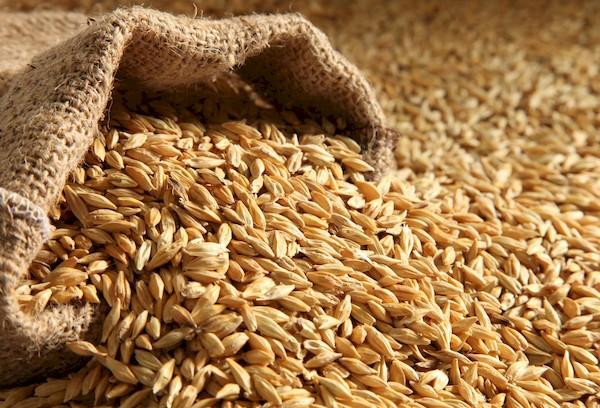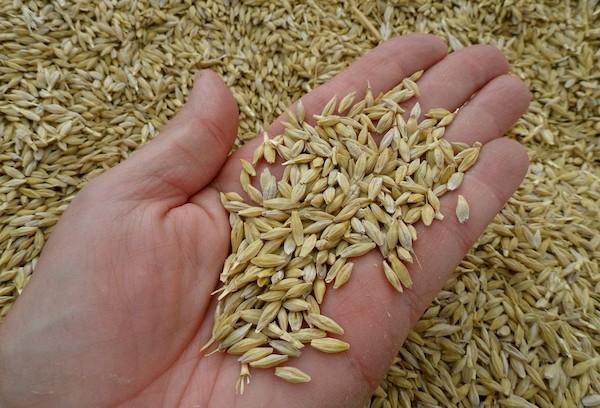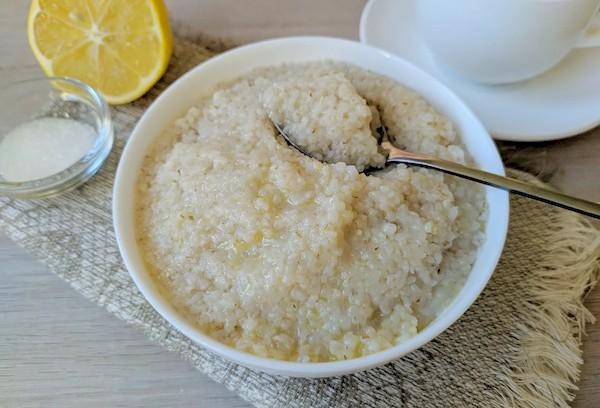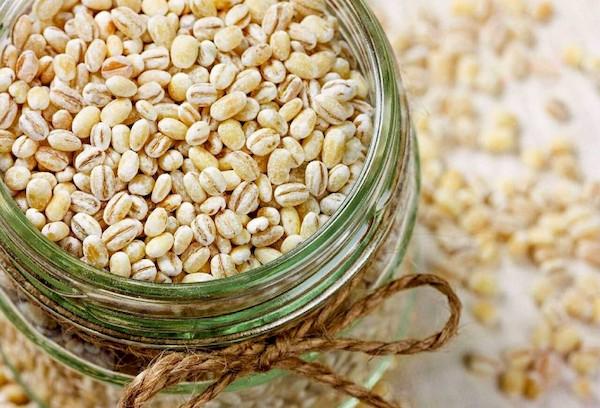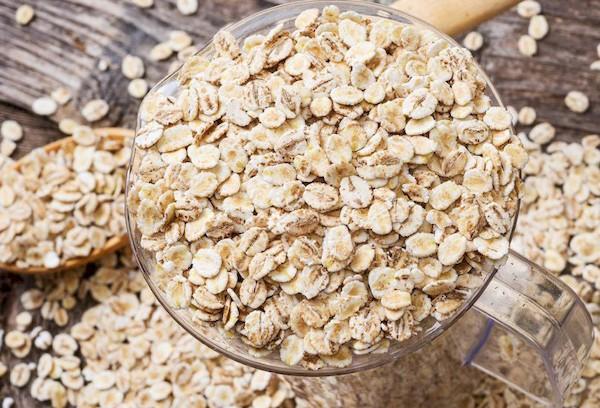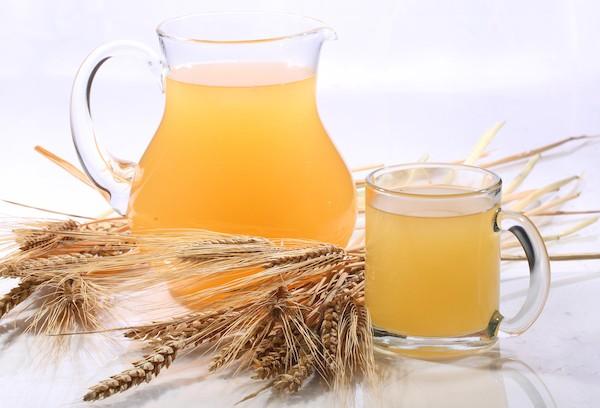Barley groats
Content:
Today we will talk about what barley groats are, what grain they are made from, and what dishes they are especially good in. So, barley cereals are made from barley cereal, and many are familiar with them under the names yachka (barley porridge) and pearl barley (barley porridge).
What is barley made from?
The raw material for the production of all types of barley cereals is barley. This is one of the most ancient cereals cultivated by man. In 1753 it received the international scientific name Hordeum (lat.). Mostly common barley is cultivated, other types are rare. It grows wild over a wide area from North Africa and about. Crete to the Tibetan mountains.
What the ears and grain fruit look like, photo:
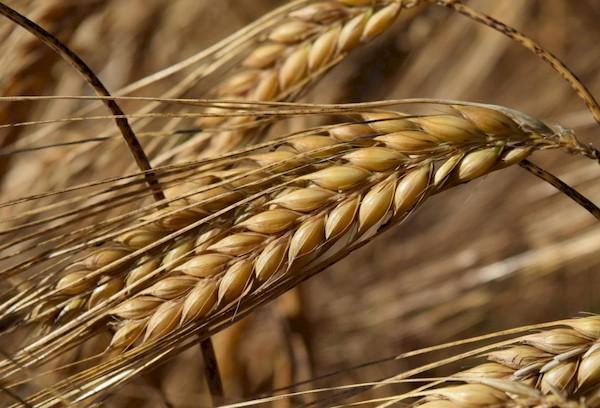
The grain from which barley is made is clearly recognizable due to its wide groove. Covering scales often grow on it.
This is interesting. Barley is the most common cereal from which malt is obtained, which is the basis of fermented drinks: beer, kvass, whiskey and others. The grain is moistened and germinated to start the fermentation process.
What is contained in 100 grams of barley groats?
Barley groats are the most valuable animal feed. It is rich in starch, a complete protein. In Russia, barley covers 70% of feed needs. It is also consumed by athletes who want to quickly gain muscle mass. In ancient Rome, gladiators were called “barley eaters.”
According to the information on the packaging, 100 g of barley cereal contains the following substances (average values):
- carbohydrates – 65.4-73.4 g;
- proteins – 8-12.1 g (up to 14% of the daily value);
- fats – 0.8-2.5 g;
- Omega-3 – 0.04-0.07 g;
- Omega-6 –0.62-0.069 g (up to 14.8% daily value);
- fiber – 3.2-8.1 g (up to 40% of the daily value).
Vitamins included:
- B1 – 0.12-0.27 mg;
- B2 – 0.06-0.08 mg;
- B4 – 37.8 mg;
- B5 – 0.145 mg;
- B6 – 0.54 mg (27% DV);
- B9 – 32 mcg;
- E – 1.5 mg;
- RR – 2-4.7 mg (23.5% DV);
- K – 2.2 mcg.
Microelements and macroelements:
- phosphorus – 323-343 mg (42% DV);
- potassium – 172-205 mg;
- magnesium – 40-50 mg (12.5% DV);
- calcium – 38-80 mg (10% DV);
- sodium – 10-15 mg;
- iron – 1.8 mg;
- manganese – 0.76 mg;
- copper – 370 mcg;
- selenium – 37.7 mcg (68% DV).
The energy value (calorie content) is 310-355.6 kcal.
Attention! Barley contains gluten, to which some people are allergic.
In medicine, barley cereals are used for medicinal purposes. The composition contains a high concentration of β-glucan polysaccharide, which helps reduce the content of bad cholesterol in the blood. Yachka and pearl barley are valued for their good balance between starch and protein and a large amount of B vitamins.
Kinds
Two types of cereals are produced from barley grains - barley, pearl barley and Dutch. When cooked, pearl barley remains crumbly, while barley grain becomes viscous. Once cooled, the cell becomes hard due to the rapid loss of water from the gelatinized starch.Barley porridge is eaten only hot.
Cereals are also selected and are available in bags for cooking.
Pearl barley
It is a whole barley grain, peeled from the shell. Thanks to its white-gray color and elongated shape, the croup is vaguely similar to freshwater pearls. Hence the name (“pearls” means “pearls” in outdated Russian).
Pearl barley is:
- polished;
- unpolished.
Unpolished grain has a pink-gray tint and often stains the water during cooking. It takes longer to cook.
Interesting fact. Barley was the favorite porridge of Peter I. It was generously flavored with butter and sprinkled with chopped dill.
Barley grits
It is crushed barley from which the husks have been removed, but part of the fruit shell has been left. What does the cell look like in the photo:
- There are several types of barley groats: finely crushed, medium-sized and large (No. 3, No. 2, No. 1, respectively).
- The grain is not ground, so the grain retains the beneficial substances characteristic of bran: fiber, vegetable protein, significant doses of vitamins B and E.
- The taste of boiled barley is simple, starchy, slightly sweet.
Dutch (Dutch)
Dutch groats differ from pearl barley in having smaller grains. But at the same time, it is larger than a cell, solid, and not split. Dutch pearl barley (as it is also called) is made by grinding barley grain until white. During the cooking process, the porridge remains snow-white. It cooks quickly, is crumbly, and has a soft texture. Soups and perlotto are often prepared with Hollandaise, and it is used with various sauces. It is well saturated with flavors and aromas. Photo of cereal:
Barley flakes
Barley flakes are considered to be a separate type of barley groats. They are produced in the same way as oatmeal.Grain of varying degrees of processing is passed between two rotating shafts. Product photo:
Pearl barley flakes are made from purified barley. Both types of barley flakes usually do not require cooking. They are filled with boiling water (preferably hot milk). After 5 minutes the dish can be eaten.
What is cooked from barley groats - 10 popular dishes
Barley groats are widely used in Russian and Scandinavian cuisine, but have been consumed since ancient times all over the world. For example, in Palestine it was used as food no later than 17,000 years ago. Also, the oldest samples were found in Egyptian tombs, Korea, and Syria. First of all, the grain was used to make beer, flour, bread and cereals.
What dishes are prepared from barley cereals:
- barley kvass made from roasted grains, sugar and raisins;
- orzotto (perlotto) - an Italian dish similar to risotto (made from pearl barley, often with mussels);
- sweet milk porridges with berry and fruit additives;
- puddings and casseroles;
- soups: mushroom, rassolnik, cabbage soup;
- kolivo made from barley with poppy seeds - a ritual dish similar to kutya and sochivo;
- stuffed peppers;
- cutlets;
- Kostromskaya gruel (fried egg porridge) - liquid barley porridge with peas.
Previously, one of the most popular dishes in Rus' made from barley groats was balikha porridge. It was prepared from barley flour and consumed with milk, butter or fried lard.
How to choose high-quality barley groats in the store?
Choosing high-quality barley cereal is the key to good taste and maximum health benefits. First of all, you need to know exactly what kind of cereal the dish is prepared from: barley, pearl barley, Dutch, or perhaps barley flakes. The difference between them is significant.
How to choose a quality product:
- Shake the packaging.There should be no fine dust, bugs, cobwebs or debris inside.
- Consider the grains (flakes). They should be approximately the same size and color.
- Look at the expiration date. Various barley groats can be stored for 10 to 18 months.
Question answer
Why is yachka called cereal for the poor?
Back in the Middle Ages in Europe, the upper classes preferred wheat to barley and rye. Barley cereals were considered peasant food. In Soviet times, they were fed barley and egg in government institutions: in the army, prison, hospital, pioneer camp. Rarely anyone prepared it at home. Gray, hard cereals for a penny price were used mainly for animal feed. Only in recent years, with the popularization of healthy eating against the backdrop of an abundance of GMO products, barley cereals have been looked at differently.
How to cook properly?
To make barley porridge tasty, there is an unspoken rule - the cereal should not be boiled, but simmered over low heat. The longer it cooks, the more pleasant the consistency and taste. For greater tenderness, the egg is boiled in milk. You can also simmer cereals in meat or mushroom broth to then prepare soup, stuffing for cabbage rolls, stuffed peppers or dolma. The viscous porridge is used to make casseroles with cottage cheese and dried fruits, chicken, and mushrooms. As a side dish, it goes well with fried vegetables (zucchini, carrots, onions), as well as bacon, porcini mushrooms, and champignons.
Who benefits from eating barley cereals?
Eating whole barley is beneficial for people suffering from diabetes. It helps reduce blood glucose in response to food intake for 10 hours. The decoction is recommended for use for inflammatory diseases of the stomach and intestines, during the recovery period after surgery on the abdominal organs.Both pearl barley and eggplant have restorative properties and help cope with exhaustion.
All types of barley groats were avoided for a long time, leaving to gather dust on store shelves. People of the older generation are accustomed to the fact that these are tasteless porridges that are cooked for dogs and livestock. But young people are little by little breaking stereotypes. Today, pearl barley and egg are often found in PP recipes. Already in the 80s, thanks to scientists from Japan, it became known that barley contains a full range of microelements and vitamins that are not found in rice. The Japanese prepared a therapeutic cocktail based on it to remove radionuclides from people affected by the Fukushima accident. What a healthy cereal this is!
